A woman reacts outside Jakarta's Ritz-Carlton hotel on July 17th, 2009 after bomb blasts tore through it and the nearby JW Marriott. Two suspected Jemaah Islamiyah suicide bombers killed at least six people and injured more than 40 others. [Arif Ariadi/AFP]
Bodies and debris of victims are piled together in the tourist area of Kuta, in southern Bali, on October 13th, 2002. A bomb attack by al-Qaeda-linked extremist group Jemaah Islamiyah (JI) killed a total of 202 people from 21 countries. [Cyril Terrien/AFP]
Filipino Red Cross Youth volunteers hold a candlelight prayer rally in Quezon city in suburban Manila on February 25th, 2009. They called for immediate release of three Red Cross aid workers abducted January 15th from a humanitarian mission and held by Abu Sayyaf gunmen on Jolo. By that July, Filipina Mary Jean Lacaba, Swiss national Andreas Notter and Italian Eugenio Vagni had all been released. [Romeo Gacad/AFP]
A victim's body lies in the street following a bomb explosion near a shopping complex in Penang on January 15th, 2006. The bomb attack during an outdoor singing competition on the Malaysian island killed one person and injured another. Nails, ammunition casings and metal pieces were found at the site. [AFP]
Indonesian Chief Police Dai Bachtiar holds a picture of the severed head of suspected Jemaah Islamiyah (JI) suicide bomber Asmar Latinsani on October 16th, 2003. The head was found at the scene of the August 5th JW Marriott hotel bombing in Jakarta that killed 12 people and injured 150 others. [Bay Ismoyo/AFP]
A seriously injured teacher cries in pain February 3rd, 2005 on his way to hospital after an ambush by suspected militants left four injured in Thailand's Yala province. For more than a decade, the Deep South provinces of Pattani, Narathiwat and Yala have been besieged by bombs planted at roadsides and in markets, and by targeted ambushes of teachers, shop owners, workers, security forces and even young students. [Muhammad Sabri/AFP]
Thai Muslim teachers examine portraits on display in Pattani province in January 2008 of local teachers killed by militants. More than 6,000 people have been killed in the Deep South since the rebellion surged in January 2004. [Tuwaedaniya Meringing/AFP]
Philippine national police chief Director General Jesus Versoza at headquarters in Manila marks an "X" sign February 25th, 2010 on the photo of arrested Mujibar Alih Amon (centre), a member of al-Qaeda-linked extremists Abu Sayyaf. The group has attacked Philippines security forces and kidnapped tourists, releasing some for ransom, while beheading others. [Ted Aljibe/AFP]
An unidentified injured man lies in an ambulance after a bomb blast in Kuta, Bali on October 1st, 2005. At least 23 people were killed in a coordinated series of blasts in the area. [AFP]
A relative of one of seven Philippine marines killed by Abu Sayyaf extremists in Jolo on July 28th, 2011, cries upon the return of their bodies to Philippine Air Force headquarters in Manila on July 30th. The al-Qaeda-affilated extremists killed seven marines, severing the heads of two and wounding 27 others. [Noel Celis/AFP]
SHARE THIS IMAGE:
This to a friend
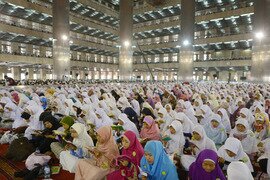
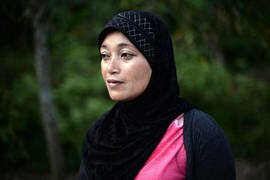
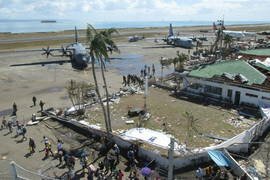
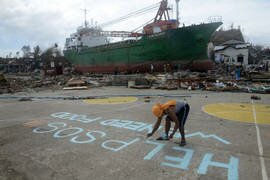
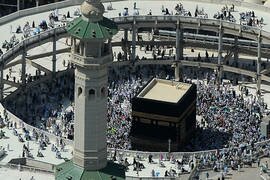
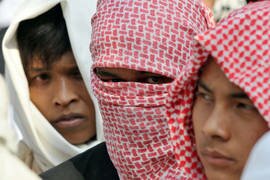
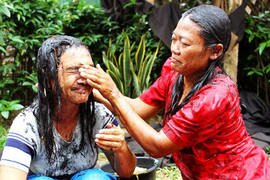

















Reader Comments
Click Here to Add a Comment
That is correct, the end of the day is almost there, death is also near. Are we ready for it?
Hopefully the country will be secure and peaceful.
The end of days is near.
Add A Comment (Comments Policy)* denotes required field